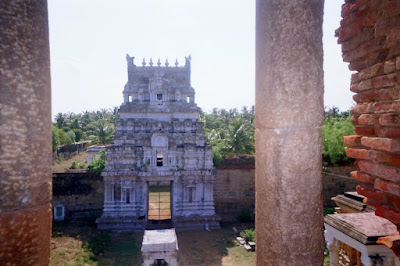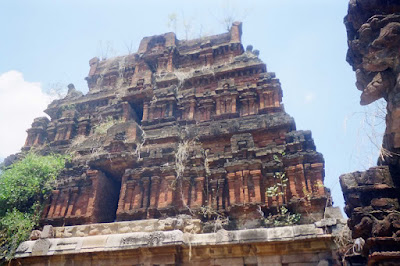Many of us know Kambar from the perspective of a poet, but only a few know that he was also a person well-versed in the field of medicine. He used to treat many people during his time. There is even an interesting legend that illustrates his medical prowess too.
Before that lets digress into some Tamil tradition of medical practices. In those days and even now in most homes, there is a traditional practice that is followed for generations is that each family knows some medical treatments for simple ailments called "Paati Vaidhiyam" (Grandma's Medication). This does not mean that they won't go to the doctor for treatment, but they don't disturb the doctor for the ailments for which they know the medication. Not only did they know about the medication, but the people organised their day to day activities and food habits that led to a healthy and hygienic life. One such practice is that of taking "Oil Bath". Oil Bath is a type of bathing where the person is massaged either using gingelly oil (Nall Ennai) or castor oil (Vilakennai) - from head to feet. Then, after sometime that person takes bath using a powder that is a mixture of two powders named Arappu and Shikakai.
Taking oil bath has the following benefits
- the body is cooled and the heat is absorbed by the oil
- the blood circulation system is rejuvenated, blood flow increases and is regulated
- the dirt in the layers of the skin gets removed as the oil soaks the skin superficially and the dirt gets removed when bathed using the above mentioned powder, thereby preventing skin related diseases.
More details of such practices in the upcoming blogs. Let’s get back to Kambar's legend. One day a lady came rushing to Kambar, carrying her son and with fear, screaming that a snake has bit her son. She asked Kambar to treat her son and save him from death. Normally in those days for snake bite there was not antidote as the modern era, but the root of a plant named Nagathaali was used and it acted as an effective antidote. Kambar inspected the boy's condition; he noticed that the boy had gone pale and blue. He asked the boys mother about when the snake bit, she told that it was less than a Naazhigai (24 minutes) [A day consists of 60 Naazhigais]. Kambar thought that a snake bite could not have caused the boy to go that pale in a short span of time, and asked if the boy had taken an oil bath. The mother said yes. Kambar immediately said sorry to the boy's mother because the boy cannot be treated and saved because the oil bath has rejuvenated his blood circulation and the poison has spread very quickly that it is impossible to save the boy at that stage.
The above story is not to project any negative thing about oil bathing. But think it in the perspective of how effective it is in rejuvenating the blood stream. Kambar knew this aspect and was able to correctly assess the situation as a doctor. So Kambar was a multi-faceted person - a poet, a doctor and an advisor to the King. Let’s honour such a great man and we should be proud of having his as the crown of the Tamil Culture and stands as an exemplary. It is no wonder that Kambar and his works are an inspiration to many.
More to come, until then...

























